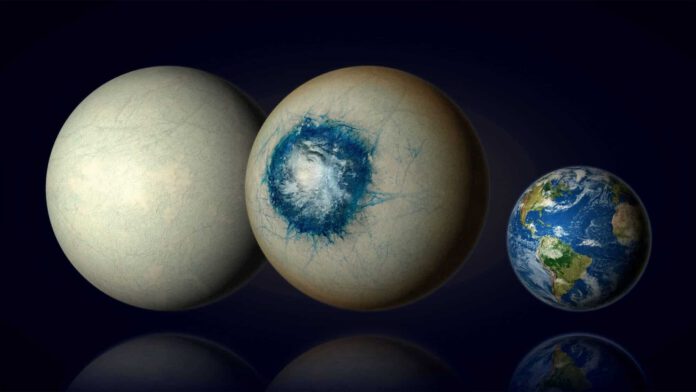
A Promising Super-Earth Discovered Not Too Far Away
Astronomers have discovered a promising super-Earth not too far away, where the weather conditions appear to be quite pleasant. The exoplanet might be an ice or water world, but this remains to be determined.
LHS 1140 b, located about 48 light-years from Earth, ranks among the most promising exoplanets in the habitable zone. Data from the James Webb Space Telescope suggests that it may even possess an atmosphere and an ocean of liquid water.
Potential Water
“This is the first time we’ve seen a hint of an atmosphere on a rocky or icy exoplanet within a habitable zone. Identifying an atmosphere on small, rocky worlds is a crucial goal for the James Webb Space Telescope, but it’s much harder than on larger planets,” explains Ryan MacDonald of NASA. “LHS 1140 b is one of the best small exoplanets within a habitable zone where a thick atmosphere might exist, and we may have just found evidence of it.”
LHS 1140 b orbits a red dwarf star that is about one-fifth the size of our sun, making it particularly interesting as one of the closest exoplanets within its star’s habitable zone. This means the planet’s temperature is moderate enough to potentially support liquid water, a critical element for life.
Super-Earth or Mini-Neptune?
Initially, the question was whether LHS 1140 b is a mini-Neptune or a super-Earth. A mini-Neptune would be a small ice giant with a hydrogen-rich atmosphere, while a super-Earth would be a rocky, water-rich planet larger than Earth. However, research indicates that the newly discovered exoplanet is unlikely to be an ice giant. Instead, it seems much more likely that LHS 1140 b is indeed a super-Earth, possibly with a nitrogen-rich atmosphere similar to that of our planet.
Moreover, early measurements suggest the planet’s density is lower than expected, indicating that 10 to 20 percent of its mass could be water. This makes LHS 1140 b a compelling candidate as a water world, possibly resembling a snowball or ice planet with a liquid ocean on the side always facing its star.
Best Bet for Water
“Of all the currently known temperate exoplanets, LHS 1140 b might be our best bet to one day find liquid water on the surface of a world outside our solar system,” says lead researcher Charles Cadieux from the Université de Montréal. “This would be a significant milestone in the search for potentially habitable exoplanets.”
The presence of nitrogen suggests that the planet may have retained a substantial atmosphere, creating conditions that support liquid water. Current models show that if LHS 1140 b has an Earth-like atmosphere, it would be a snowball planet with an ocean about 4,000 kilometers in diameter, roughly half the size of the Atlantic Ocean. The surface temperature at the center of this extraterrestrial ocean could even be a comfortable 20 degrees Celsius.
Exceptional Planet
The potential atmosphere and favorable conditions for liquid water make this planet an exceptional candidate for possible life. “This is our first glimpse of an atmosphere on a super-Earth within the habitable zone. Compared to other known exoplanets, such as those in the TRAPPIST-1 system, the star LHS 1140 appears quieter and less active, making it easier to distinguish the atmosphere from signals caused by star spots,” MacDonald notes.
According to the scientist, LHS 1140 b might be the best-known planet with a habitable zone so far. “Although we need more James Webb observations to confirm the nitrogen-rich atmosphere and to search for other gases, this is a very promising start.”











